mmcartalk
Expert
- Messages
- 4,155
- Reactions
- 2,675
MM Retro-Write-Up: 4th-Generation Lexus ES300/330
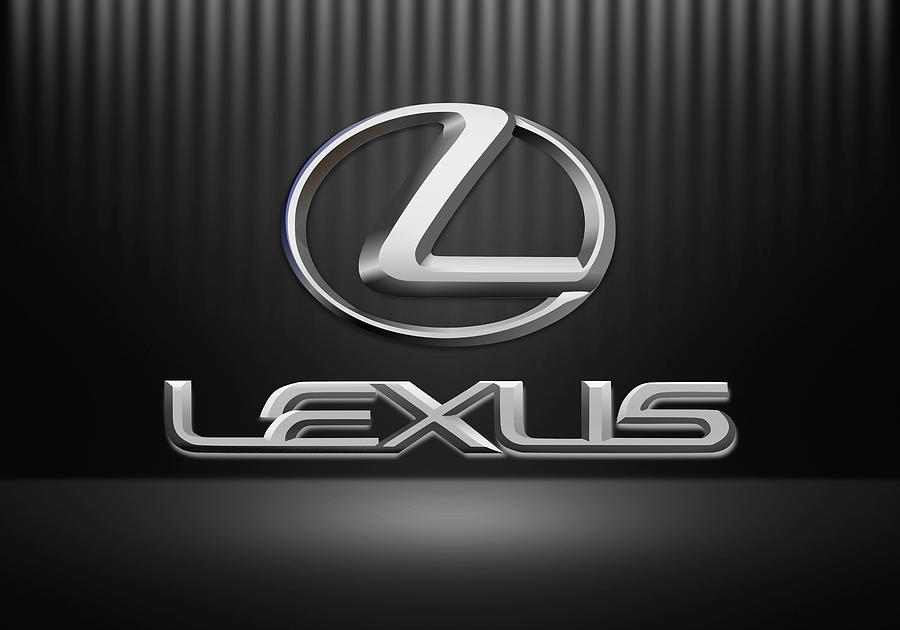
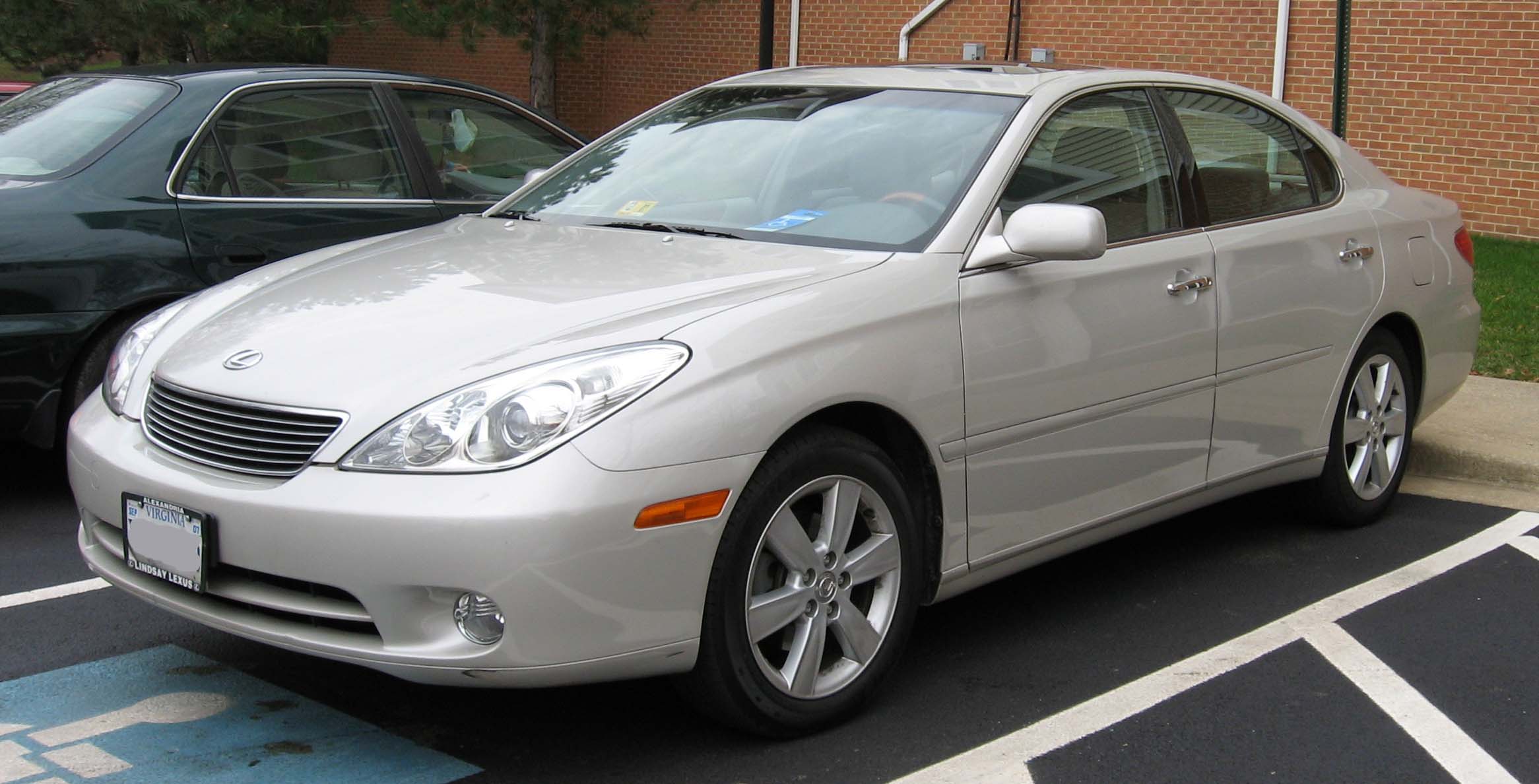
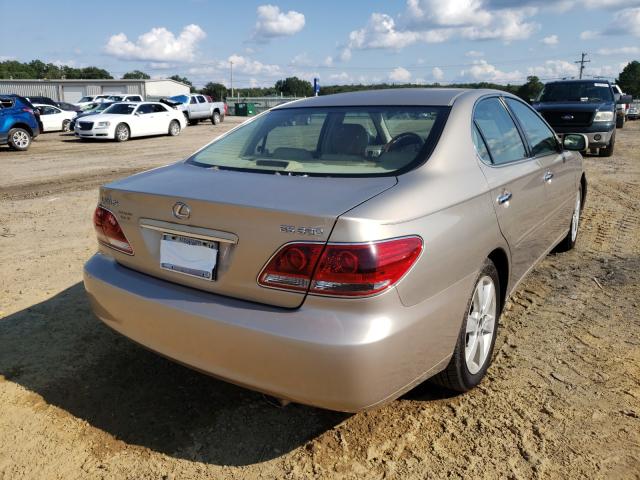
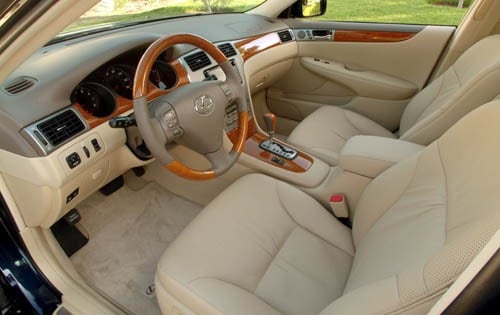
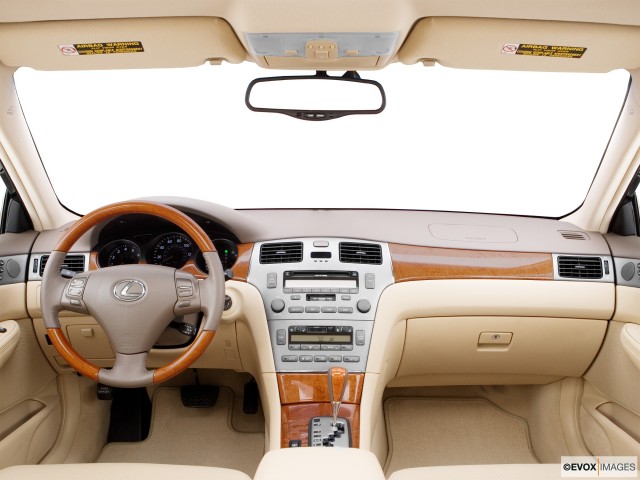

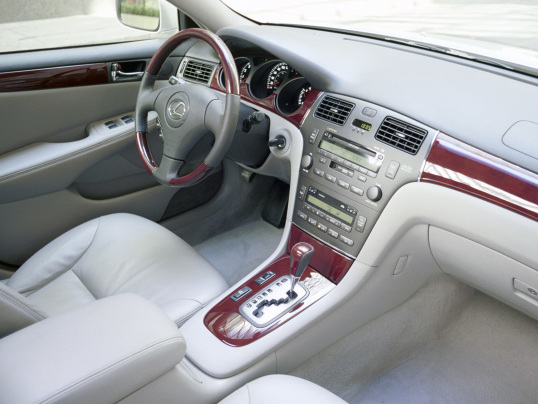



IN A NUTSHELL: A classic symbol of Lexus at its peak.
In the shadow of the superb (for the period) Lexus LS400 full-sized luxury-sedan, which, of course, was introduced along with the Lexus nameplate/division itself, the company felt, as Acura had done with the smaller/less-expensive Integra as an alternative to the larger Acura Legend, that a smaller, less-expensive to the large LS400 was also needed with Lexus. The rapidly-growing popularity of the mid-sized Toyota Camry sedan served as an ideal platform, and the first Lexus ES250 was born in 1989 for the 1990 model year. Its mid-sized Camry roots, however, made it a little larger in physical size than the Integra. Like the Integra (and the Camry), it utilized a transverse-engine and front-wheel-drive….but not an AWD All-Trac or wagon version like the Camry. Unlike the Integra, it lacked a two-door version and was never popular with aftermarket tuners or customizing crowd, since it was primarily a four-door family sedan aimed at ride-comfort/quietness/refinement rather than the Integra’s sport-orientation. The designation for the ES250, of course, came from the Toyota 2.5L V6 used in the Camry).
And, like the LS400 itself, both the ES and the Integra were extremely well-built. My long-standing opinion is that, with a couple of exceptions (I’ll get into one or two of them below), both Toyota and Honda (and, by default, Lexus and Acura) made their best products in terms of build quality/excellence/materials from the late 1980s, through the 1990s, into the early 2000s…and then it was downhill from there, as also with the ES.
IMO, however, the first-generation ES, although well-built and delivering pretty much what it was designed to do in terms of being a reasonably-priced entry-luxury sedan, lacked personality. Its interior, although with definite Lexus touches, wasn’t that much different from the Camrys of the period. And, perhaps with some justification, it was seen more as a Camry in a tuxedo-suit rather than as a true luxury sedan like its big-brother LS. It did not sell particularly well at first, for the period….between 20,000 and 22,000 units for the first two years, and Lexus management decided that a new version was needed….one that would differentiate itself more from the Camry, and perhaps appeal more to those looking for a classy mid-sized non-sport-oriented luxury sedan.
The second-generation ES300, introduced in 1992, while still using the also-redesigned Camry platform. differentiated itself noticeably more from the Camry than the first-generation had. It was slightly larger, had notably different body/interior styling, and, in general, more personality and individuality….but, again, no wagon like the Camry. It sold roughly twice what the first-generation had done in terms of sales per year, so Lexus kept it in production longer….until 1997, when a new Third-Generation model was introduced, which, was not much different from the second-generation on the outside, had an interior that, like the first-generation, was more psuedo-Camry, and, like with the redesign of the Camry from 1996 to 1997, IMO showed some cost-cutting inside and out. Both the second and third-generation ES300 also had the smooth-running 3.0L V6 engine, which was usually OK as long as you religiously kept the oil and filter changed, but extremely unforgiving if you didn’t go exactly by the book. It had small-diameter oil-passageways to try and keep the oil/engine temperature up for emissions reasons, and the oil had to be clean/fresh so it could flow easily through the passages…if not, gel and sludge would quickly form from the heat, and cause major engine damage, particularly with petroleum-based (non-synthetic) oil. I can still remember seeing a number of Toyota/Lexus products, equipped with this engine, in the service bays getting new or rebuilt engines that had gelled/sludged up….in fact, there was a class-action suit that Toyota eventually settled.
Which brings us to the superb Fourth-Generation model, introduced in 2001, which, IMO, was, overall, the best ES model ever built. Lexus threw out the book with this model, forgot about cost-cutting, really out their minds to it, produced a truly excellent ES, and, again IMO, has not been equalled since. I’m not saying that it was a perfect car (no vehicle is), nor the equal of the also-superb LS430 full-sized sedan (which, IMO, was the best LS ever built). But, in terms of the ES line, it was the cream of the crop. In its first year, it sold over 71,000 units, making it the best-selling luxury car in the U.S. that year. For 2004, it received a new, larger 3.3L V6, which eliminated the oil-sensitivity of the previous 3.0L.
It was not without its quirks. The shift-lever, in typical (for the period) Lexus-design, had an annoying zig-zag pattern, which I’ve never liked as much as a straight fore/aft motion. The clear headlight-covers, in contrast to the conservative but elegant design of the rest of the body-styling, swept far back up the sides of the hood in a weird-fashion. On some of the versions, there were electronic quirks in the control-units for the transmission and throttle-by-wire response that affected drivability and low-speed acceleration. These were supposed to be addressed by factory-updates in the program-flashing, but, as with the sister IS300 (which I owned at the time), the actual effectiveness of those updates was questionable.
But, aside from a few quirks, this was a remarkable vehicle…..I had a very high opinion of it, and, after buying my 2001 IS300, actually had some remorse that I had not chosen the ES instead. There were things on the IS that I really liked…the bright yellow paint (which was not offered on any other Lexus sedan), the chronometer-type gauge-panel, the chrome-ball shifter (real chrome-metal, not plastic), and, of course, the Rock-of-Gibraltar construction, taken from the Toyota Altezza. But the Fourth-Generation ES300/330 was clearly more of a Lexus in some other things I also liked….ride comfort, softer suspension, plusher seats, and generous (no cost-cutting) wide swaths of beautiful California-Walnut wood trim on the dash and all four door panels, available in several different wood-colors. The interior, especially for the period, was gorgeous…more or less a scaled-down vision of the LS inside. In many ways inside, it resembled a classic wood-and-leather Jaguar interior. And, although the doors didn’t shut with quite as solid a thud as I would have liked (as they did in my IS), in general, one cannot fault the materials used in this car inside and out.
It was also, IMO, probably a better daily-driver than my IS, particularly in the winter. The RWD in my IS, even with the all-season tire package, 55-series tires, snow-mode for the automatic transmission, and electronic traction-control, though OK in mildly-slippery conditions, simply couldn’t hack it on really slippery roads…its rear end was all over the place, even with my careful driving. Stability control and AWD were not yet offered on the IS…that would come with the Second-Generation IS. I did not specifically sample an ES on snow, but similar FWD products had reasonably good traction if the tires were not excessively worn. The ES never got around to offering AWD until today (it will an forthcoming option)…but, for most reasonable winter driving, probably didn’t need it, particularly since roads are plowed and cleaned in many areas today. Also, many Lexus buyers who wanted AWD on this same platform simply bought the perennially-best-selling Toyota Highlander and Lexus RX…..so the Lexus designers simply did not feel the need to add it to the ES.
Well, all good things on Earth eventually come to an end (in this case, sadly), and the Fifth-Generation ES, in 2007, with slightly lower-profile tires, a firmer suspension, and (to my senses) a somewhat firmer ride, along with a loss of much (though not all) of its beautiful wood-trim inside simply made the car less-pleasant to sit in and ride than the fourth-generation model. Customers also noticed…..and complained. Lexus did a mid-cycle interior spruce-up for the 2010 model year, adding some of the nice trim back and improving the sound insulation. But, though improved, It wasn’t the same, though, as the Fourth-Generation…the car, by then, even with trim-improvements, just wasn’t built to the same standards.
And, for the 6th generation model, the bean-counters won again…sheet-metal, materials-solidity, trim-quality, and general feeling of solidness all took a nose dive. The doors felt very light and shut with a clinking noise instead of a solid thud. A refresh for the 2017 model year added the now-ubiquitous Spindle-Grille, which I am not a fan of, either on the ES or any other Lexus model. The 7th-Generation model, introduced in 2019, to its credit, made some (needed) improvements in sheet-metal/body/door-solidness. But I found its quirky interior controls, severely-raked rear roofline (it was, in fact, more of a four-door coupe than sedan) off-putting. And, with the 45-series tire-package, a overly-rough/noisy ride for my tastes. I did not sample an 2019 ES with the 55-series tires (none were available in dealer-stock at the time)…but, in all fairness, a new Toyota Avalon with the 55-series tires rode much better, with a lower noise-level, and I suspect that the ES (now-engineered on the same platform as the Avalon) would also do so with the 55-series.
As some of you might gather from this write-up, I did not actually own a 4th-Generation model ES. But I confess that, to some extent, I wish I had. I had the opportunity (I’d actually call it a more of a privilege) to test-drive several versions, at several different Lexus shops in both Virginia and Maryland. I’ve known a number of people who have owned or leased ES models several different generations (including people I swim with regularly at the indoor recreation-center pool)…and I occasionally drove one of them on occasion what person was temporarily incapacitated. I toyed with the idea of trading in my IS300 on a 4th-Generation ES, but then figured that I had paid too much for the IS to simply trade it away after a couple of years, and, with the end of my long (30-year+) Federal career then on the horizon, decided to keep the IS and, several years later, eventually trade it for a winter-specific AWD Outback. So, I took what I probably would have spent on a trade-in, and bought more tax-free securities for my retirement. Still, although I’m pretty sure I made the right move at the time economically, missing out on the chance to get a new 4th-Generation ES was generally not something I was happy about.
And, as Always, Happy Car Memories.

MM
__________________

DRIVING IS BELIEVING










IN A NUTSHELL: A classic symbol of Lexus at its peak.
In the shadow of the superb (for the period) Lexus LS400 full-sized luxury-sedan, which, of course, was introduced along with the Lexus nameplate/division itself, the company felt, as Acura had done with the smaller/less-expensive Integra as an alternative to the larger Acura Legend, that a smaller, less-expensive to the large LS400 was also needed with Lexus. The rapidly-growing popularity of the mid-sized Toyota Camry sedan served as an ideal platform, and the first Lexus ES250 was born in 1989 for the 1990 model year. Its mid-sized Camry roots, however, made it a little larger in physical size than the Integra. Like the Integra (and the Camry), it utilized a transverse-engine and front-wheel-drive….but not an AWD All-Trac or wagon version like the Camry. Unlike the Integra, it lacked a two-door version and was never popular with aftermarket tuners or customizing crowd, since it was primarily a four-door family sedan aimed at ride-comfort/quietness/refinement rather than the Integra’s sport-orientation. The designation for the ES250, of course, came from the Toyota 2.5L V6 used in the Camry).
And, like the LS400 itself, both the ES and the Integra were extremely well-built. My long-standing opinion is that, with a couple of exceptions (I’ll get into one or two of them below), both Toyota and Honda (and, by default, Lexus and Acura) made their best products in terms of build quality/excellence/materials from the late 1980s, through the 1990s, into the early 2000s…and then it was downhill from there, as also with the ES.
IMO, however, the first-generation ES, although well-built and delivering pretty much what it was designed to do in terms of being a reasonably-priced entry-luxury sedan, lacked personality. Its interior, although with definite Lexus touches, wasn’t that much different from the Camrys of the period. And, perhaps with some justification, it was seen more as a Camry in a tuxedo-suit rather than as a true luxury sedan like its big-brother LS. It did not sell particularly well at first, for the period….between 20,000 and 22,000 units for the first two years, and Lexus management decided that a new version was needed….one that would differentiate itself more from the Camry, and perhaps appeal more to those looking for a classy mid-sized non-sport-oriented luxury sedan.
The second-generation ES300, introduced in 1992, while still using the also-redesigned Camry platform. differentiated itself noticeably more from the Camry than the first-generation had. It was slightly larger, had notably different body/interior styling, and, in general, more personality and individuality….but, again, no wagon like the Camry. It sold roughly twice what the first-generation had done in terms of sales per year, so Lexus kept it in production longer….until 1997, when a new Third-Generation model was introduced, which, was not much different from the second-generation on the outside, had an interior that, like the first-generation, was more psuedo-Camry, and, like with the redesign of the Camry from 1996 to 1997, IMO showed some cost-cutting inside and out. Both the second and third-generation ES300 also had the smooth-running 3.0L V6 engine, which was usually OK as long as you religiously kept the oil and filter changed, but extremely unforgiving if you didn’t go exactly by the book. It had small-diameter oil-passageways to try and keep the oil/engine temperature up for emissions reasons, and the oil had to be clean/fresh so it could flow easily through the passages…if not, gel and sludge would quickly form from the heat, and cause major engine damage, particularly with petroleum-based (non-synthetic) oil. I can still remember seeing a number of Toyota/Lexus products, equipped with this engine, in the service bays getting new or rebuilt engines that had gelled/sludged up….in fact, there was a class-action suit that Toyota eventually settled.
Which brings us to the superb Fourth-Generation model, introduced in 2001, which, IMO, was, overall, the best ES model ever built. Lexus threw out the book with this model, forgot about cost-cutting, really out their minds to it, produced a truly excellent ES, and, again IMO, has not been equalled since. I’m not saying that it was a perfect car (no vehicle is), nor the equal of the also-superb LS430 full-sized sedan (which, IMO, was the best LS ever built). But, in terms of the ES line, it was the cream of the crop. In its first year, it sold over 71,000 units, making it the best-selling luxury car in the U.S. that year. For 2004, it received a new, larger 3.3L V6, which eliminated the oil-sensitivity of the previous 3.0L.
It was not without its quirks. The shift-lever, in typical (for the period) Lexus-design, had an annoying zig-zag pattern, which I’ve never liked as much as a straight fore/aft motion. The clear headlight-covers, in contrast to the conservative but elegant design of the rest of the body-styling, swept far back up the sides of the hood in a weird-fashion. On some of the versions, there were electronic quirks in the control-units for the transmission and throttle-by-wire response that affected drivability and low-speed acceleration. These were supposed to be addressed by factory-updates in the program-flashing, but, as with the sister IS300 (which I owned at the time), the actual effectiveness of those updates was questionable.
But, aside from a few quirks, this was a remarkable vehicle…..I had a very high opinion of it, and, after buying my 2001 IS300, actually had some remorse that I had not chosen the ES instead. There were things on the IS that I really liked…the bright yellow paint (which was not offered on any other Lexus sedan), the chronometer-type gauge-panel, the chrome-ball shifter (real chrome-metal, not plastic), and, of course, the Rock-of-Gibraltar construction, taken from the Toyota Altezza. But the Fourth-Generation ES300/330 was clearly more of a Lexus in some other things I also liked….ride comfort, softer suspension, plusher seats, and generous (no cost-cutting) wide swaths of beautiful California-Walnut wood trim on the dash and all four door panels, available in several different wood-colors. The interior, especially for the period, was gorgeous…more or less a scaled-down vision of the LS inside. In many ways inside, it resembled a classic wood-and-leather Jaguar interior. And, although the doors didn’t shut with quite as solid a thud as I would have liked (as they did in my IS), in general, one cannot fault the materials used in this car inside and out.
It was also, IMO, probably a better daily-driver than my IS, particularly in the winter. The RWD in my IS, even with the all-season tire package, 55-series tires, snow-mode for the automatic transmission, and electronic traction-control, though OK in mildly-slippery conditions, simply couldn’t hack it on really slippery roads…its rear end was all over the place, even with my careful driving. Stability control and AWD were not yet offered on the IS…that would come with the Second-Generation IS. I did not specifically sample an ES on snow, but similar FWD products had reasonably good traction if the tires were not excessively worn. The ES never got around to offering AWD until today (it will an forthcoming option)…but, for most reasonable winter driving, probably didn’t need it, particularly since roads are plowed and cleaned in many areas today. Also, many Lexus buyers who wanted AWD on this same platform simply bought the perennially-best-selling Toyota Highlander and Lexus RX…..so the Lexus designers simply did not feel the need to add it to the ES.
Well, all good things on Earth eventually come to an end (in this case, sadly), and the Fifth-Generation ES, in 2007, with slightly lower-profile tires, a firmer suspension, and (to my senses) a somewhat firmer ride, along with a loss of much (though not all) of its beautiful wood-trim inside simply made the car less-pleasant to sit in and ride than the fourth-generation model. Customers also noticed…..and complained. Lexus did a mid-cycle interior spruce-up for the 2010 model year, adding some of the nice trim back and improving the sound insulation. But, though improved, It wasn’t the same, though, as the Fourth-Generation…the car, by then, even with trim-improvements, just wasn’t built to the same standards.
And, for the 6th generation model, the bean-counters won again…sheet-metal, materials-solidity, trim-quality, and general feeling of solidness all took a nose dive. The doors felt very light and shut with a clinking noise instead of a solid thud. A refresh for the 2017 model year added the now-ubiquitous Spindle-Grille, which I am not a fan of, either on the ES or any other Lexus model. The 7th-Generation model, introduced in 2019, to its credit, made some (needed) improvements in sheet-metal/body/door-solidness. But I found its quirky interior controls, severely-raked rear roofline (it was, in fact, more of a four-door coupe than sedan) off-putting. And, with the 45-series tire-package, a overly-rough/noisy ride for my tastes. I did not sample an 2019 ES with the 55-series tires (none were available in dealer-stock at the time)…but, in all fairness, a new Toyota Avalon with the 55-series tires rode much better, with a lower noise-level, and I suspect that the ES (now-engineered on the same platform as the Avalon) would also do so with the 55-series.
As some of you might gather from this write-up, I did not actually own a 4th-Generation model ES. But I confess that, to some extent, I wish I had. I had the opportunity (I’d actually call it a more of a privilege) to test-drive several versions, at several different Lexus shops in both Virginia and Maryland. I’ve known a number of people who have owned or leased ES models several different generations (including people I swim with regularly at the indoor recreation-center pool)…and I occasionally drove one of them on occasion what person was temporarily incapacitated. I toyed with the idea of trading in my IS300 on a 4th-Generation ES, but then figured that I had paid too much for the IS to simply trade it away after a couple of years, and, with the end of my long (30-year+) Federal career then on the horizon, decided to keep the IS and, several years later, eventually trade it for a winter-specific AWD Outback. So, I took what I probably would have spent on a trade-in, and bought more tax-free securities for my retirement. Still, although I’m pretty sure I made the right move at the time economically, missing out on the chance to get a new 4th-Generation ES was generally not something I was happy about.
And, as Always, Happy Car Memories.

MM
__________________

DRIVING IS BELIEVING

